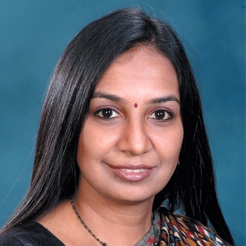Wi-Max in India: Subhashini Prabhakar, Dax Networks

Wi-Max is a wireless broadband technology that has the potential to revolutionise the broadband industry. The technology will facilitate high speed broadband internet access to residential as well as corporate users. Wi-Max, unlike other local area technologies that operate in a small area, will cover wide metropolitan and rural regions. Moreover, it will provide quick internet access to places that are difficult to wire by cellular providers.
India lacks a well-developed wired infrastructure. In remote areas, broadband connections are provided mainly through copper, optic fibre and DSL. This involves high costs as roads have to be dug up to lay cables. Installation costs can be drastically reduced by using wireless connections. Wi-Max is the ideal medium to provide internet services to different parts of the country as it transcends signals over many other channels, which are less cluttered than Wi-Fi. As a result, these signals are less prone to interference and can travel a distance of up to 50 km.
The technology is designed to provide high speed internet access. Network connectivity offered by Wi-Max in metropolitan areas extends up to 40 Mbps, with applications like last mile broadband connections, cellular backhaul and high speed enterprise connectivity for businesses.
Wi-Max is set to lead the Indian broadband growth story. With a broadband subscriber base of over 8.5 million and a limited copper line infrastructure, wireless is the only viable option for India and technologies like Wi-Max are expected to drive the growth of this segment.
Demand
The demand for broadband connectivity in urban areas and from small/medium businesses is growing rapidly; existing wireline technologies cannot meet these requirements effectively. Wireless will become the dominant medium for providing broadband services just as it dominates voice services.
The technology is ideal for rural areas, which have limited or no infrastructure in place. It delivers higher speed connections and offers greater coverage than other existing technologies. It can, therefore, help provide internet connectivity in rural and semi-urban areas.
Role of Wi-Max
Wi-Max’s role in the development of the Indian communication industry will depend on the service providers’ orientation. They are expected to take different approaches in deploying Wi-Max, as in the case of Wi-Fi. However, clear deployment patterns will evolve based on whether the operator is an incumbent facility-based local exchange carrier owning an access network or a relatively new non-facility-based local exchange carrier without any access network.
Spectrum allocation
There is no uniform global licensed spectrum for Wi-Max, but the WiMAX Forum has published three licensed spectrum profiles – 2.3 GHz, 2.5 GHz and 3.5 GHz – in an effort to facilitate standardisation and decrease costs. Countries like India and Indonesia will use a mix of 2.5 GHz, 3.3 GHz and other frequencies. Analog TV bands may become available for Wi-Max usage, but are awaiting the comprehensive rollout of digital TV. In addition, there will be other uses suggested for that spectrum.
The future
The adoption of Wi-Max is expected to increase rapidly over the next few years. High speed data access is likely to bridge the urban-rural digital divide and help address the issues of delivering essential services like education, finance and health care. Going forward, Wi-Max networks will be looked upon as potential last mile connectivity solutions as well as cost-effective deployments vis-à-vis traditional wireline connectivity, as most parts of India, especially rural areas, have limited telecom infrastructure.
- Most Viewed
- Most Rated
- Most Shared
- Related Articles
- Solar Opportunity: Business case for the...
- Telecom Infrastructure in India: Anil Ta...
-
Sitapathy Chavali, Reliance Communicatio...

- Dr. Vikram Saksena, EVP & CTO, Tellabs
- The global surveillance market is experi...
- Understanding cloud telephony and the co...
- LTE offers comprehensive IP based teleco...
- 2014 promises to be another year of disr...
- Interview with Dr Lakshminath Dondeti, D...
- IT trends for 2014: John Michelsen, Chie...






